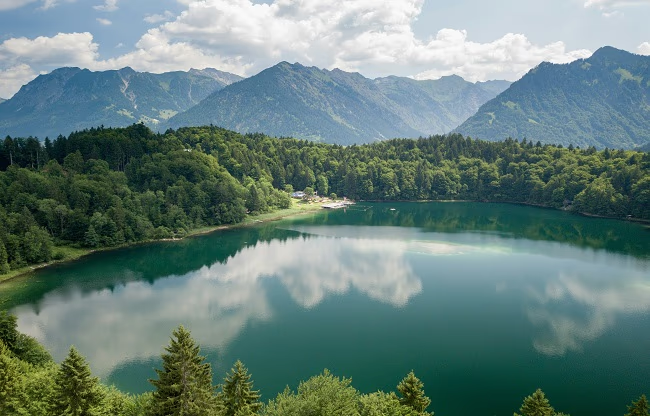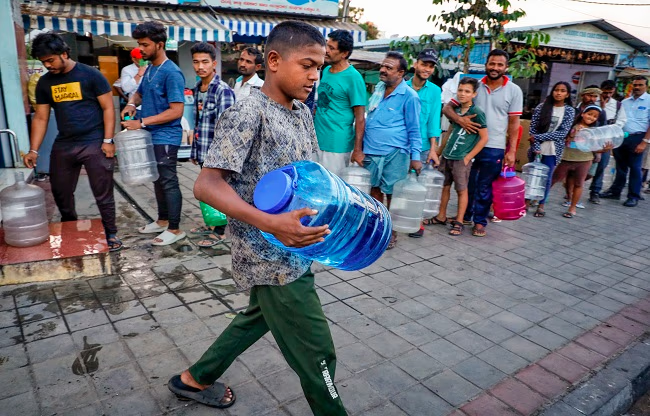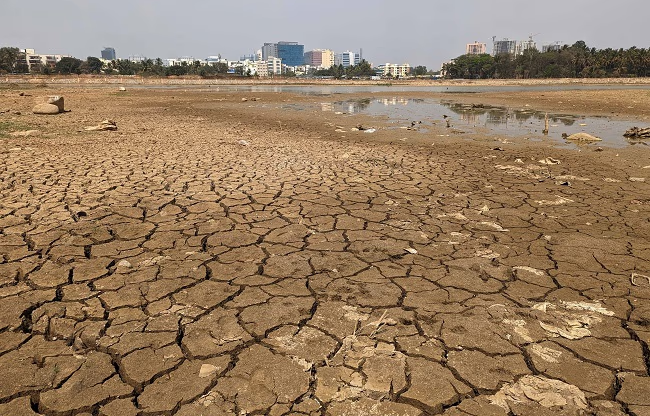February is not yet over, but signs of drought are already visible in Bengaluru. If the situation persists, the city might face a severe crisis this summer. Several measures, like imposing fines and urging citizens to conserve water, have been introduced. Bengaluru wasn't always like this. Once endowed with lakes and rivers, these water bodies are now dry, raising concerns about whether Bengaluru is on the verge of turning into a desert.
Current Situation
According to Ram Prasad Manohar, Chairman of the Bengaluru Water Supply and Sewerage Board (BWSSB), the southeastern, Whitefield, and outskirts are most likely to experience severe water scarcity. These areas depend heavily on groundwater. Studies have identified all regions that could face acute water shortages with the onset of summer. Subsequently, the water board has urged residents to switch from groundwater to Cauvery water connections and has imposed a 5,000 Rupee fine on water wastage.
Given the water crisis, Deputy CM DK Shivakumar initiated a special task force. Their six-month study revealed Bengaluru's growing dependence on groundwater, with an extraction of 800 million liters daily. But what are the factors escalating the water scarcity in the city? To understand, we must delve into its history.

Source: aajtak
Rulers Built Lakes
Historically, Bengaluru wasn’t naturally abundant with lakes. To address water storage, the city's rulers constructed lakes. In the 16th century, Kempe Gowda, a powerful chieftain of the Vijayanagara Empire, laid the city’s foundation. With meticulous planning, he constructed numerous lakes and ponds. Various records suggest there were over a thousand lakes connected by a network of canals, ensuring year-round water supply.
Continuous Encroachment
By the mid-20th century, only 262 lakes remained in Bengaluru. Over time, even these dwindled rapidly. In favor of building large apartments, IT parks, and roads, lakes were filled in. During the 1970s, several major areas replaced lakes: Koramangala Lake turned into a sports complex, and Kanteerava Stadium now stands where Sampangi Lake once did. Remaining lakes were choked with polluted water and plastic. Today, fewer than 20 lakes show signs of life only during the rains.
Are Dried-Up Lakes the Sole Cause?
The answer is not just the drying lakes. Bengaluru, with a population of 13 million, sources half of its water from groundwater and the rest from the Cauvery River. Transporting river water is costly and not available everywhere, prompting residents to drill borewells. As the population grew, so did the demand for water, leading to deeper borewells reaching 1500 feet. However, with diminishing rainfalls, even groundwater levels are receding.

Source: aajtak
Why Does Bengaluru Get Less Rainfall?
Bengaluru's elevation above sea level impacts its monsoon strength, as it isn't a coastal city. The deficiency in rainfall directly affects groundwater levels. However, why isn't a similar crisis seen in other states with low rainfall? Karnataka's groundwater characteristics differ due to its rocky soil, which fails to absorb water. This results in flooding with minimal rainfall, and the water quickly vanishes.
City's Water Sources
Bengaluru relies on the Cauvery pipeline and borewells for water. With dwindling groundwater, residents dependent on borewells face scarcity as summer approaches. Even at high prices, tanker water is scarce. Last year, Deputy CM stated that even his home's borewell had dried out. An Aljazeera report mentioned that the central government warned in 2018 that by the decade's end, 40% of Bengaluru's population might lack drinking water.

Source: aajtak
Is Day-Zero Looming?
'"Day-Zero'" means reaching a point where water is nearly exhausted, forcing residents to struggle for even minimal needs. In 2018, Cape Town in South Africa nearly became the world's first city to reach Day-Zero. The crisis was so severe that daily water quotas were imposed.
A notable incident during January amid strict water restrictions saw hotels and stadiums enforce rules, even restricting players’ bathing water supply. Hotel pools and laundries shut down. Through arduous efforts and enforcement, Cape Town recovered. But now, our city faces a similar threat.
Can Bengaluru Turn Into a Desert?
As water scarcity and deforestation escalate, the fear of desertification grows. Scientists classify regions with less than 25 centimeters of annual rainfall as deserts. In India, the average annual rainfall is 120 centimeters, spread across different months. Areas with significantly lower averages may be deemed desert-like.
History shows many examples of lush regions transforming into deserts. The Sahara was once green but turned into the largest desert due to global warming. Similarly, Uzbekistan's Aral Sea, once the world’s fourth-largest lake, disappeared due to excessive farming and mismanagement of water resources.




